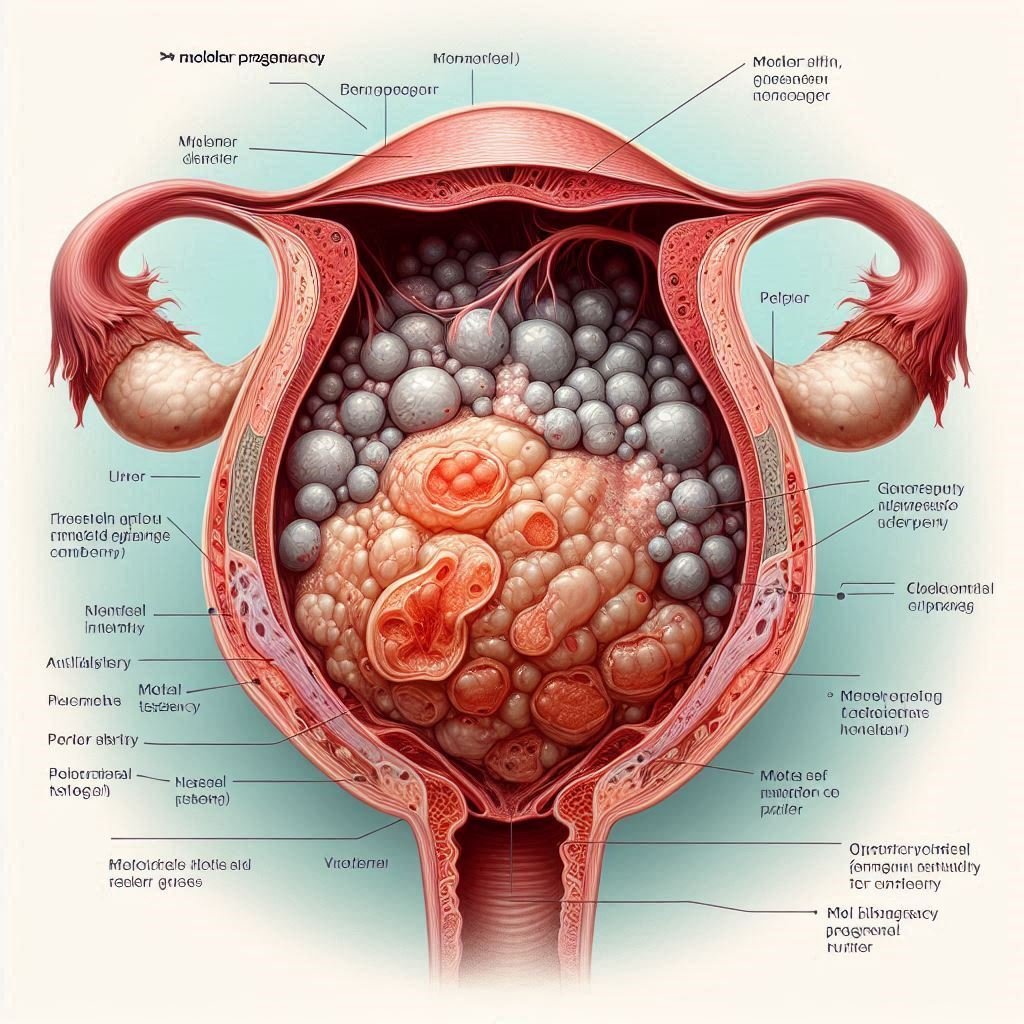Molar pregnancy, also known as hydatidiform mole , is a rare complication of pregnancy characterized by abnormal growth of trophoblasts , the cells that normally develop into the placenta. While this condition can be alarming, it’s important to understand the recovery rate and what it entails. This article will delve into the details of molar pregnancy, treatment options, and recovery prospects, ensuring it is SEO optimized for better reach.
What is Molar Pregnancy?
Molar pregnancy occurs when there is an abnormal fertilization of the egg, leading to the growth of cystic masses instead of a normal placenta. There are two types of molar pregnancies: complete and partial. In a complete molar pregnancy, there is no normal fetal tissue, whereas, in a partial molar pregnancy, there may be some normal fetal tissue alongside the abnormal tissue.
Diagnosis and Initial Treatment
Diagnosing a molar pregnancy typically involves an ultrasound and measurement of the beta-hCG hormone levels, which are usually higher than normal in these cases. Once diagnosed, the primary treatment is a surgical procedure called dilation and curettage (D&C) to remove the molar tissue from the uterus.
Recovery Rate and Follow-Up Care
The recovery rate from a molar pregnancy is generally very high. Most women recover completely with appropriate treatment and follow-up care. Here are the detailed aspects of recovery:
Monitoring Beta-hCG Levels: After the initial treatment, monitoring beta-hCG levels is crucial. These hormone levels are checked regularly until they return to normal, which indicates that all molar tissue has been removed. This process can take several weeks to months.
Risk of Gestational Trophoblastic Neoplasia (GTN): In a small percentage of cases, molar pregnancy can develop into a more serious condition called gestational trophoblastic neoplasia. However, even in these cases, the treatment success rate is very high with appropriate chemotherapy.
Long-Term Monitoring: Women who have experienced a molar pregnancy are usually advised to avoid pregnancy for at least six months to one year. This allows healthcare providers to ensure that beta-hCG levels remain normal and there is no recurrence.
Success Rate and Prognosis
The prognosis for women who have experienced a molar pregnancy is excellent, with a nearly 100% recovery rate when properly treated and monitored. Here are some key points:
Complete Molar Pregnancy: Approximately 80-90% of complete molar pregnancies are benign and do not progress to GTN.
Partial Molar Pregnancy: Partial molar pregnancies are less likely to develop into GTN compared to complete moles.
Reproductive Outcomes: Most women can expect to have normal pregnancies in the future after recovering from a molar pregnancy.
Emotional and Psychological Support
Experiencing a molar pregnancy can be emotionally challenging. It is important for women to seek support from healthcare providers, support groups, and mental health professionals. Addressing emotional and psychological well-being is a critical part of the recovery process.
Conclusion
Molar pregnancy, though a rare and distressing condition, has an excellent recovery rate with proper treatment and follow-up care. Regular monitoring of beta-hCG levels, understanding the risks of GTN, and adhering to medical advice can ensure a full recovery and pave the way for future healthy pregnancies. If you have experienced a molar pregnancy, stay in close contact with your healthcare provider to monitor your recovery and seek support when needed. By doing so, you can confidently look forward to a healthy future.




